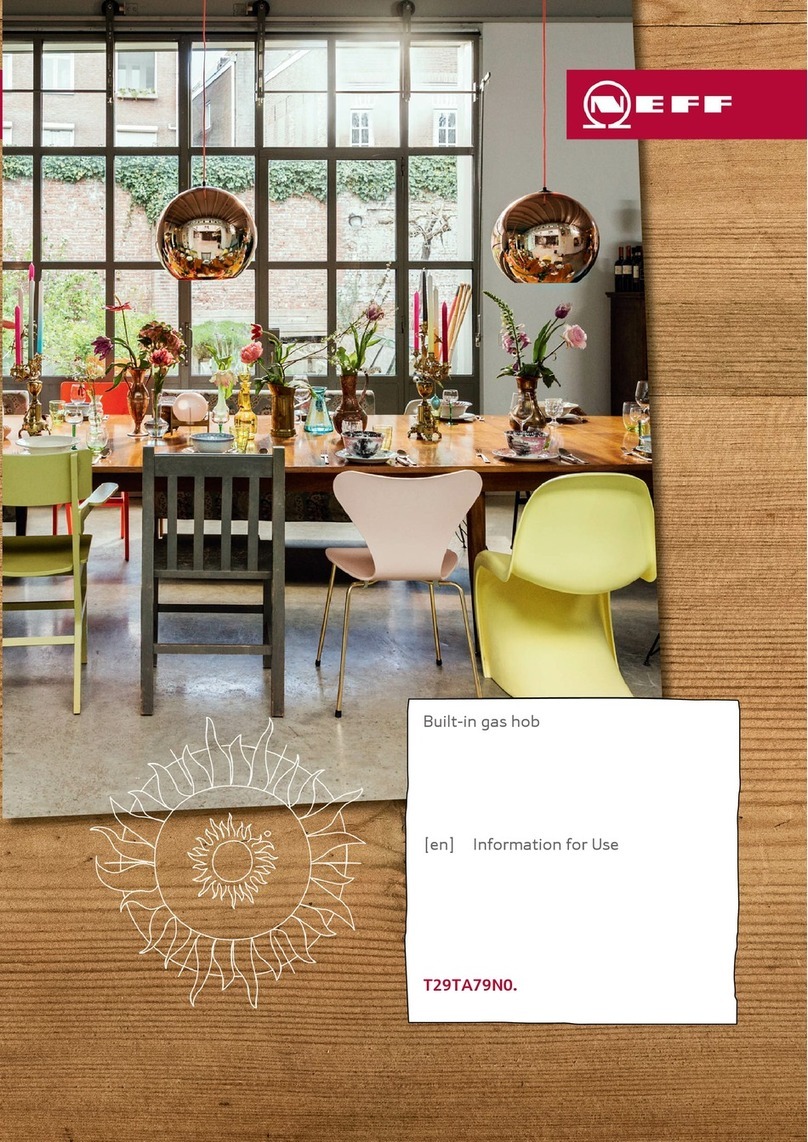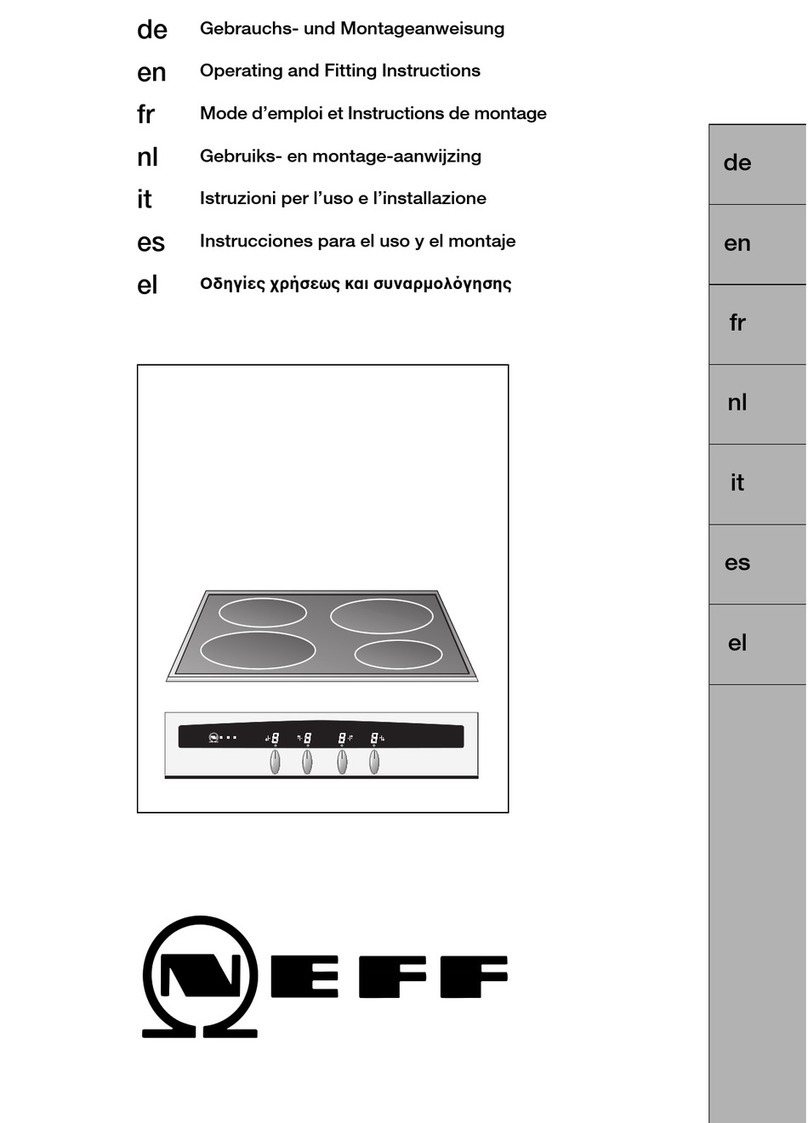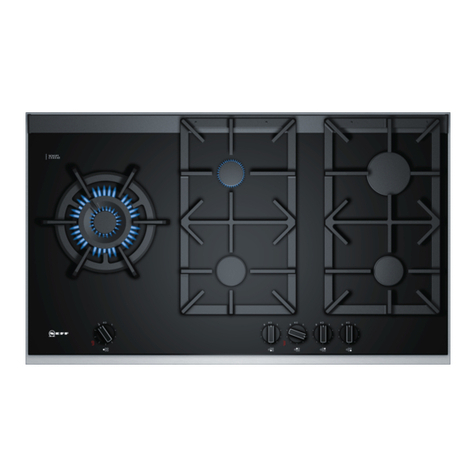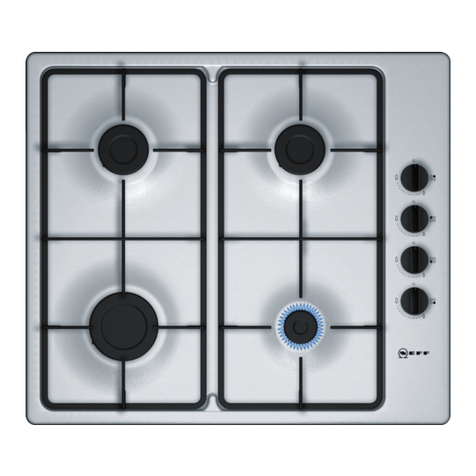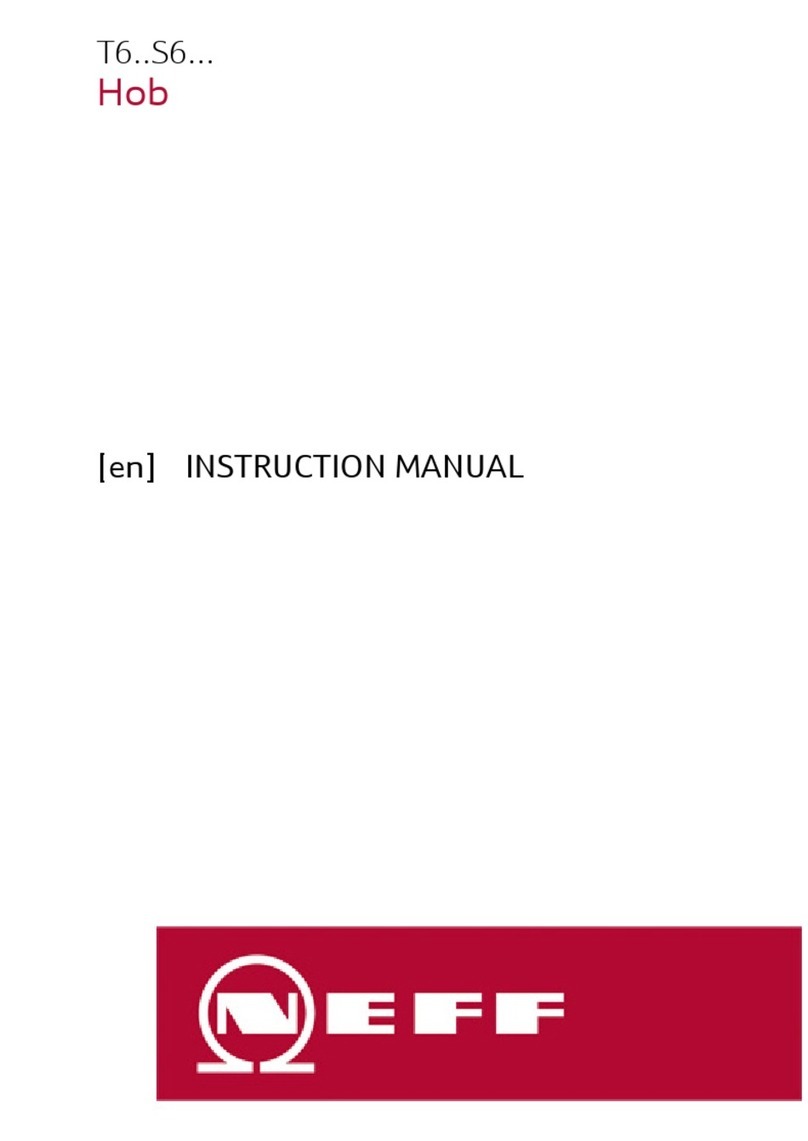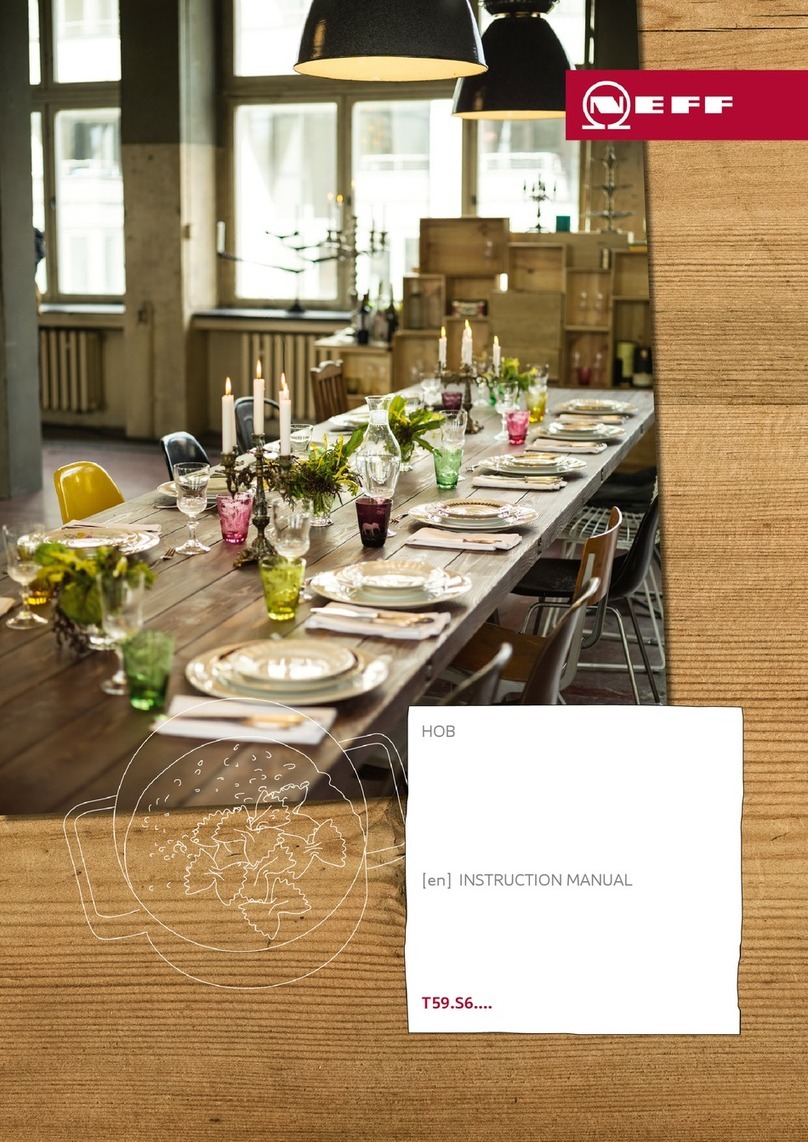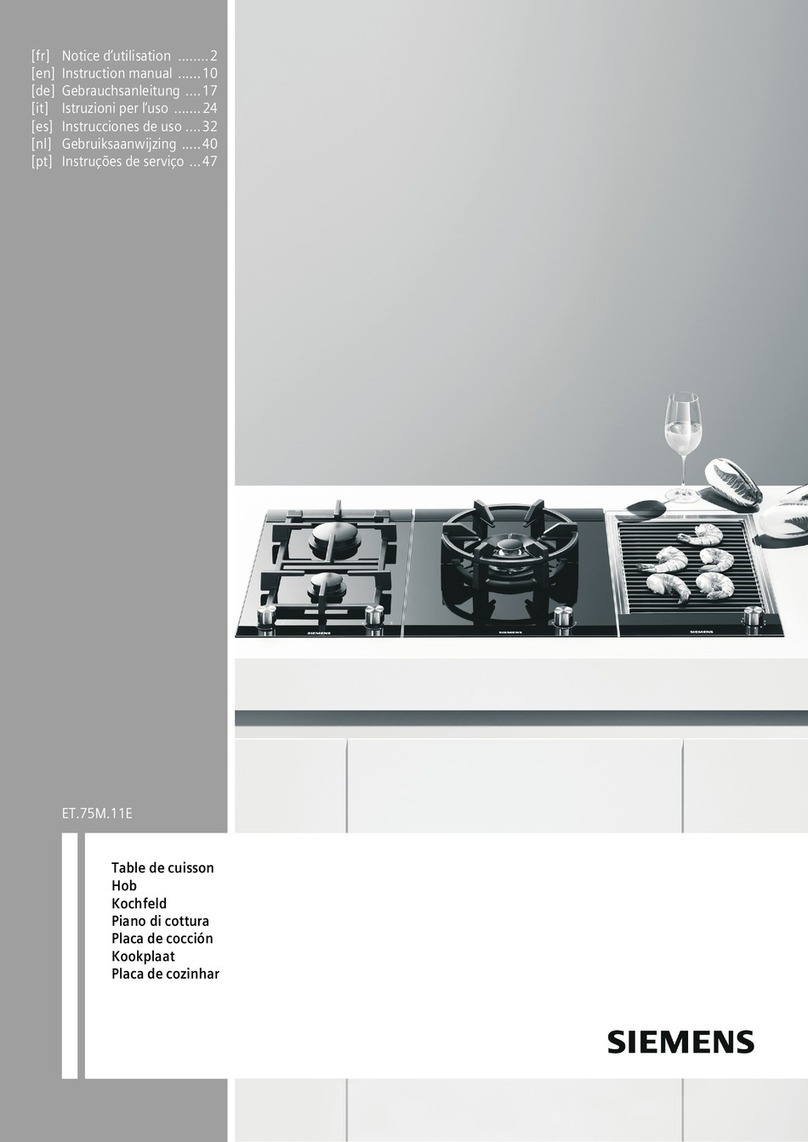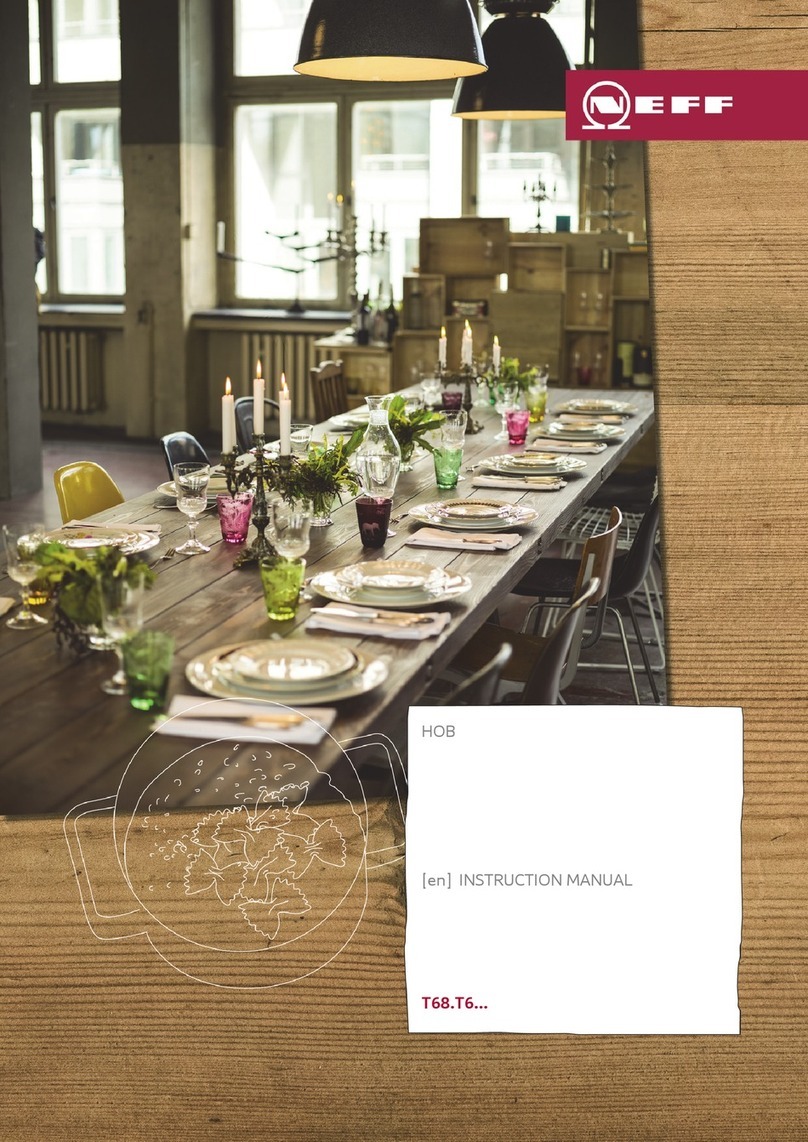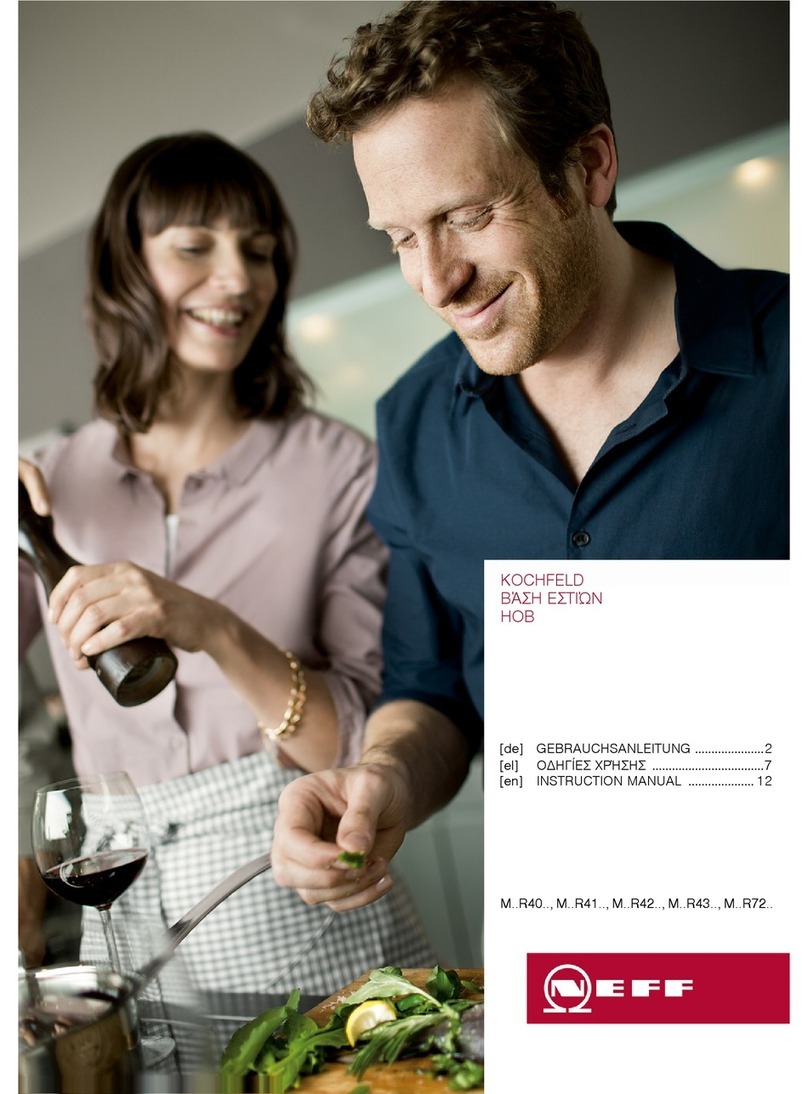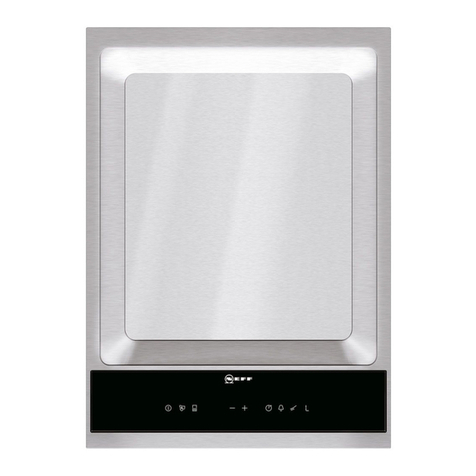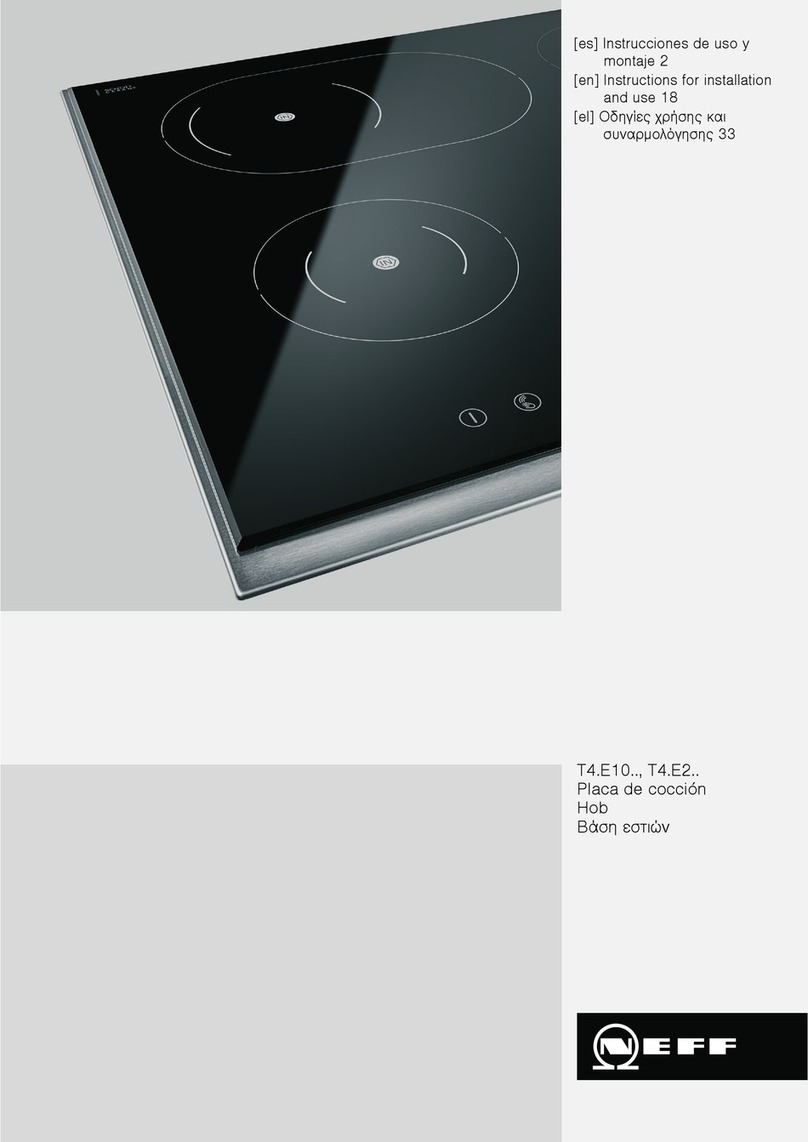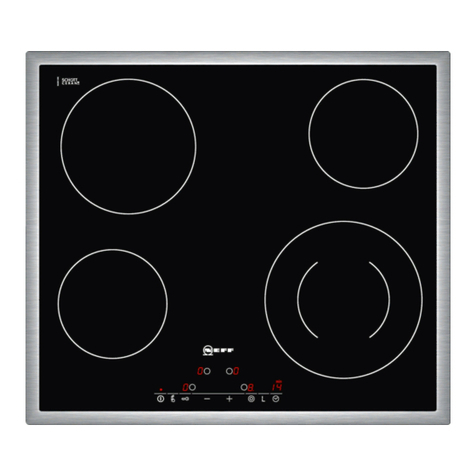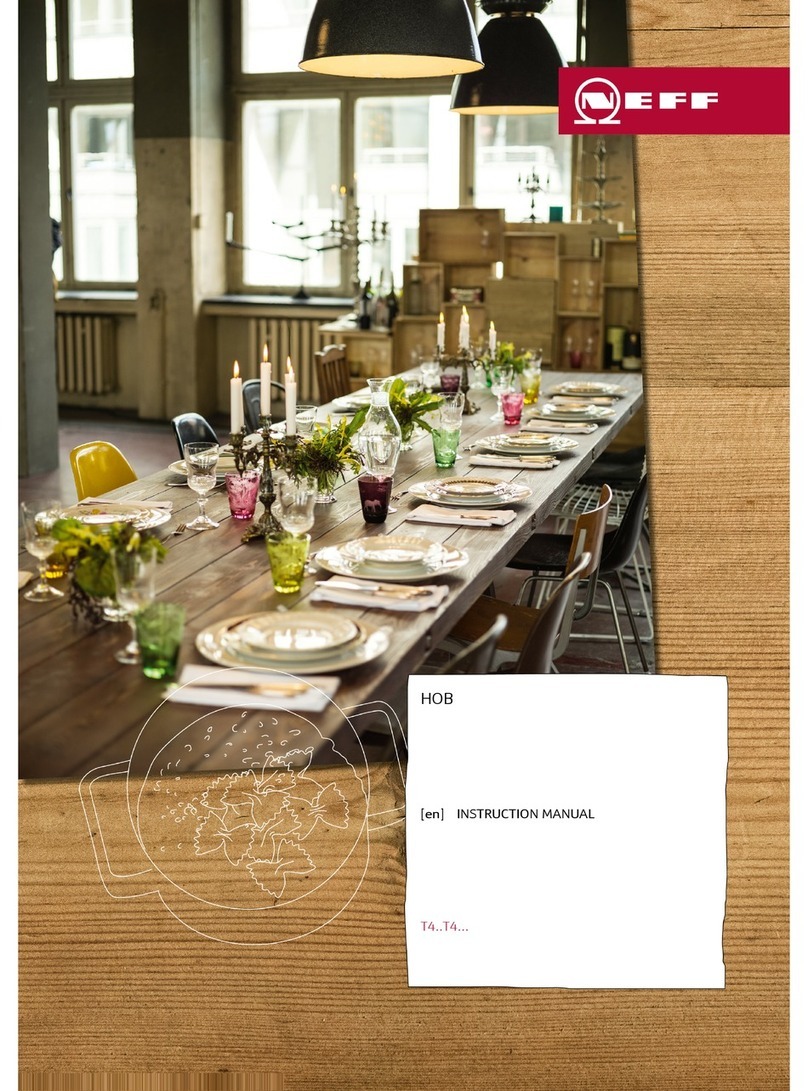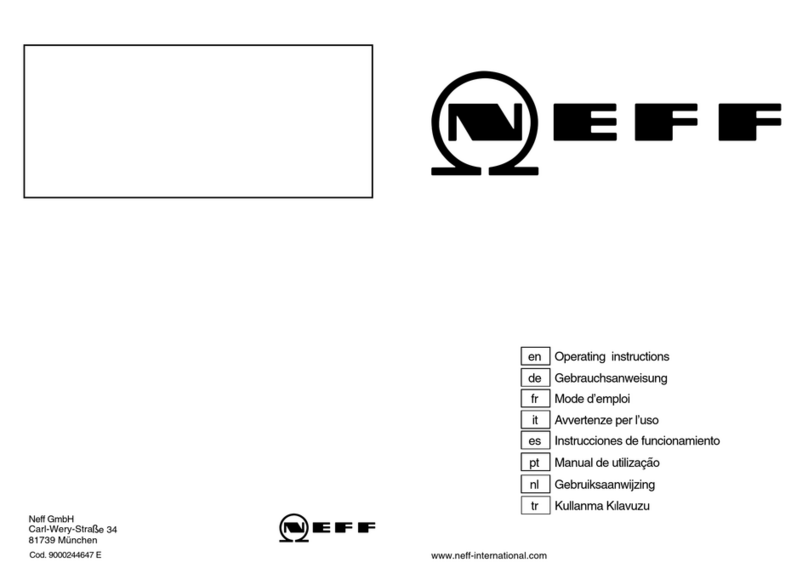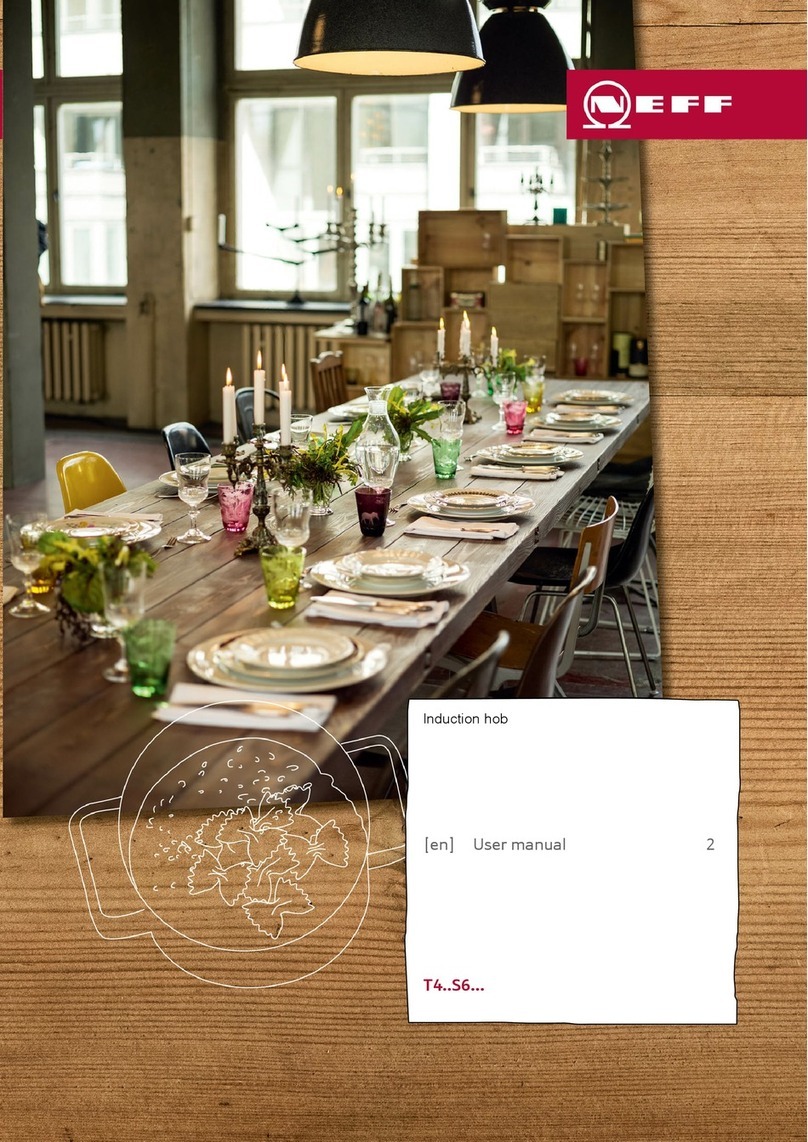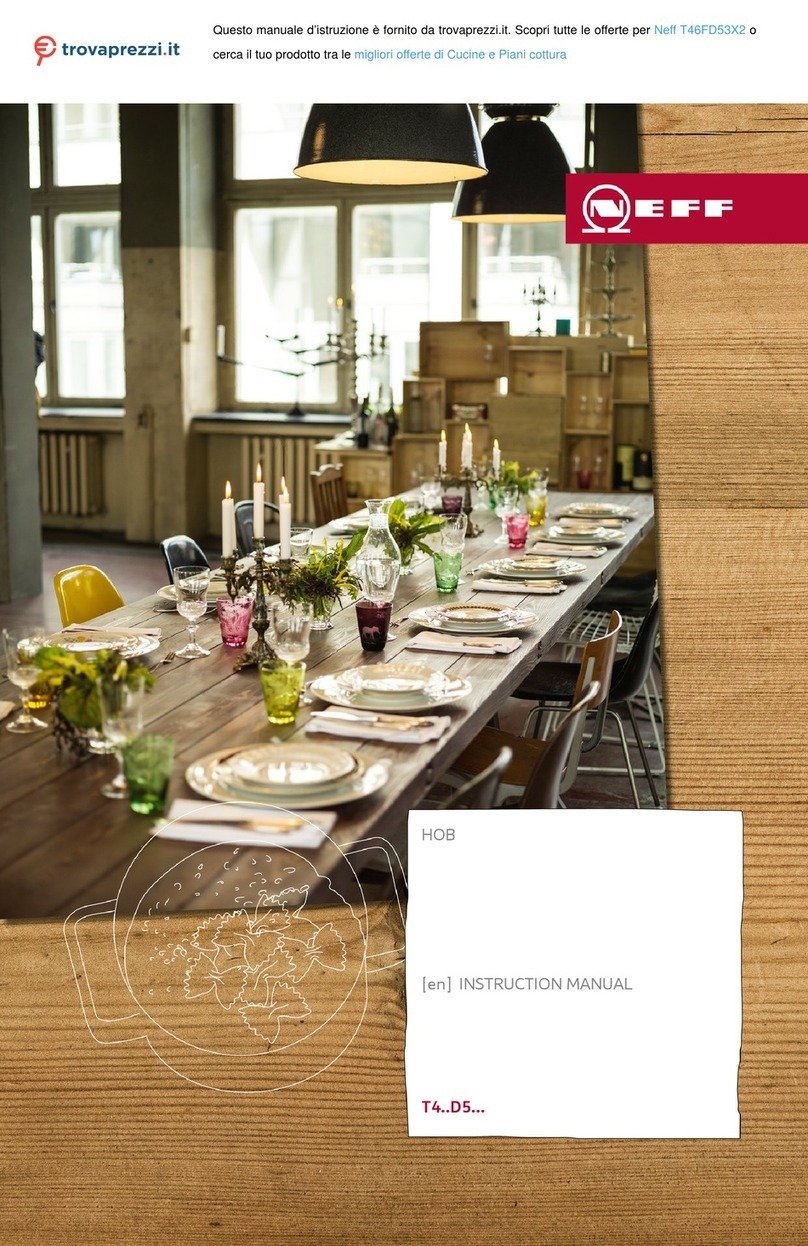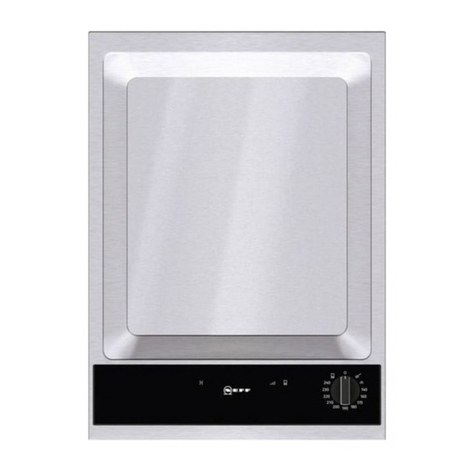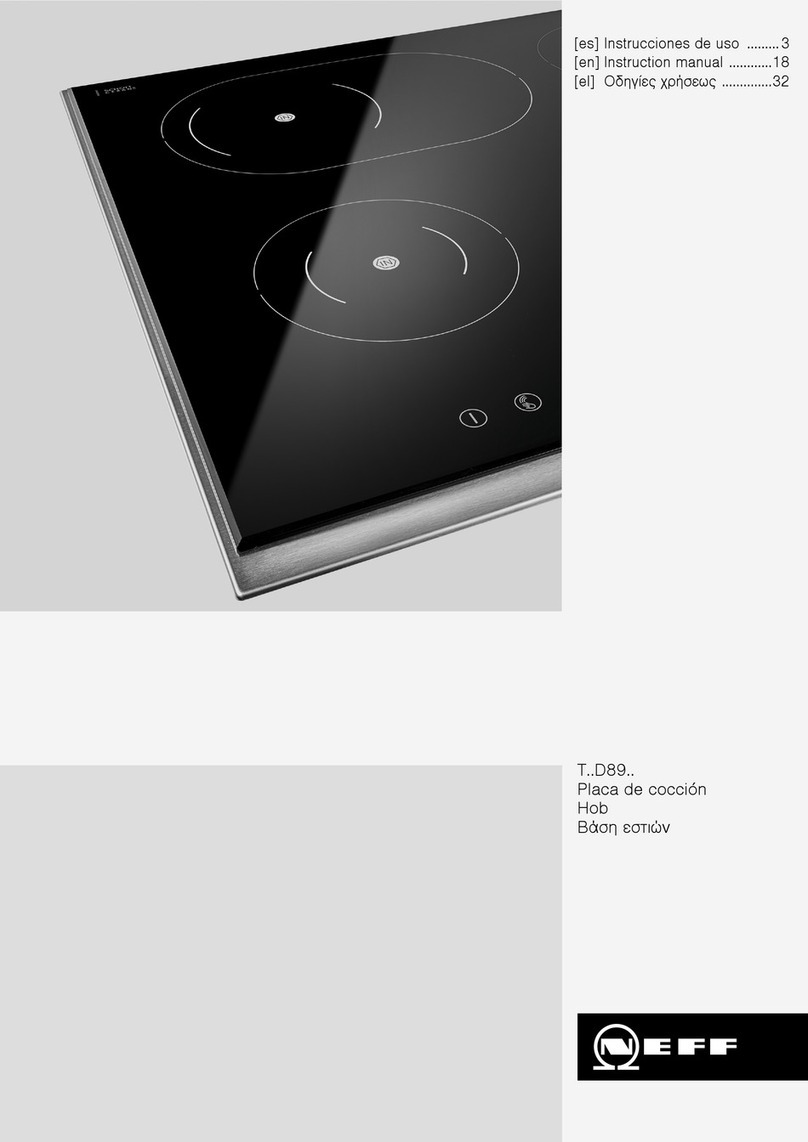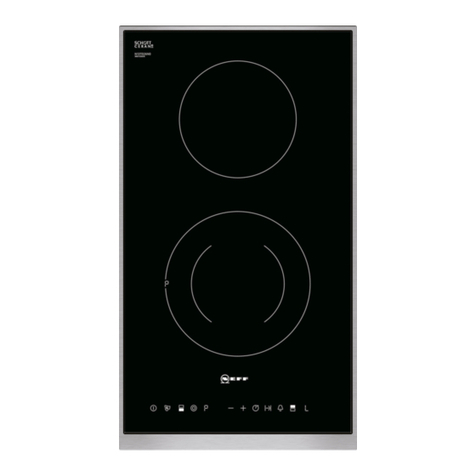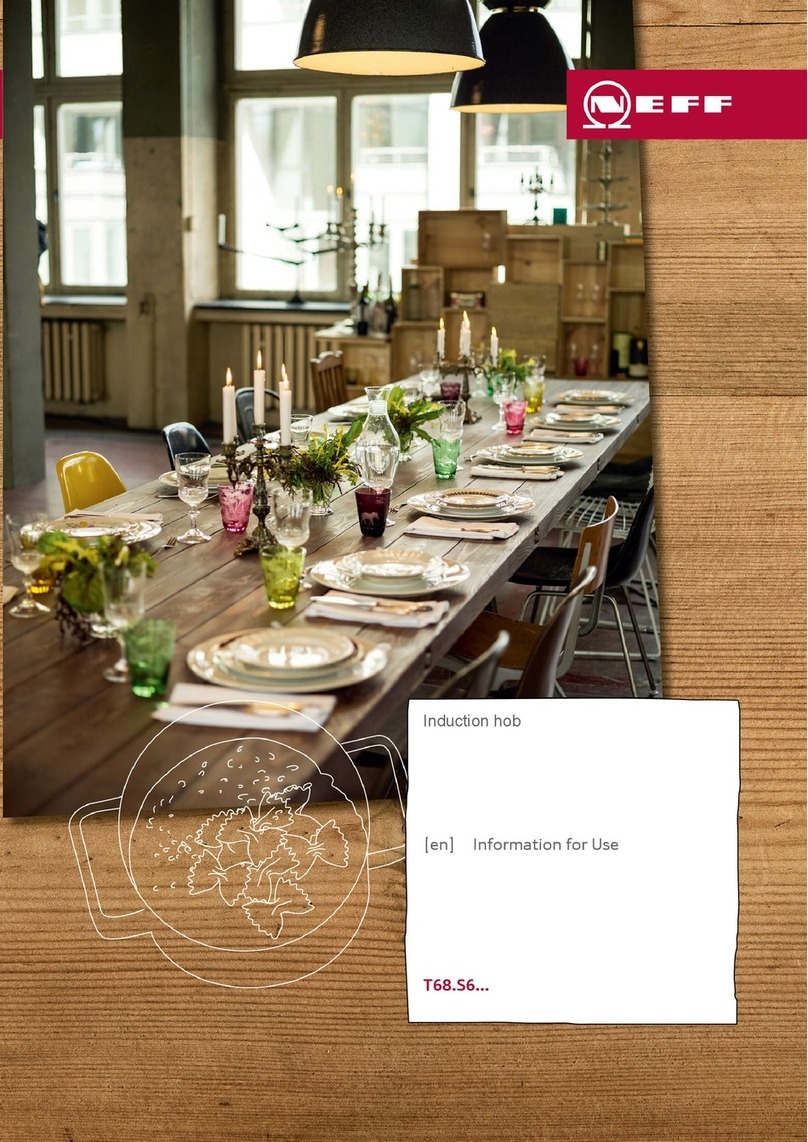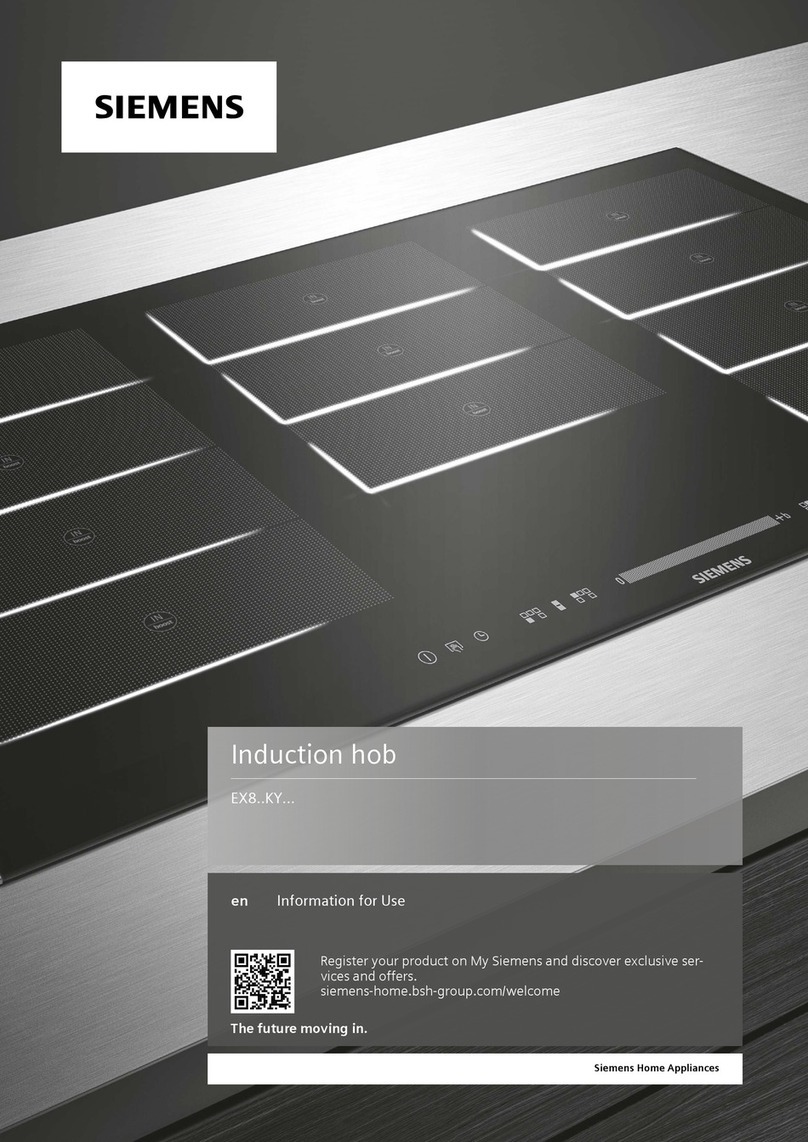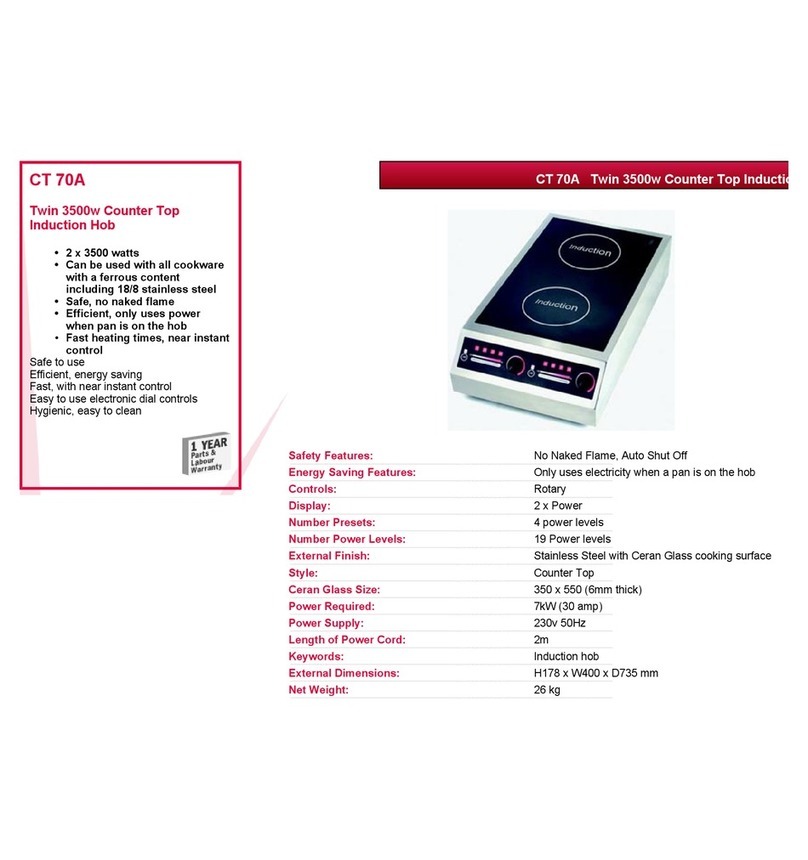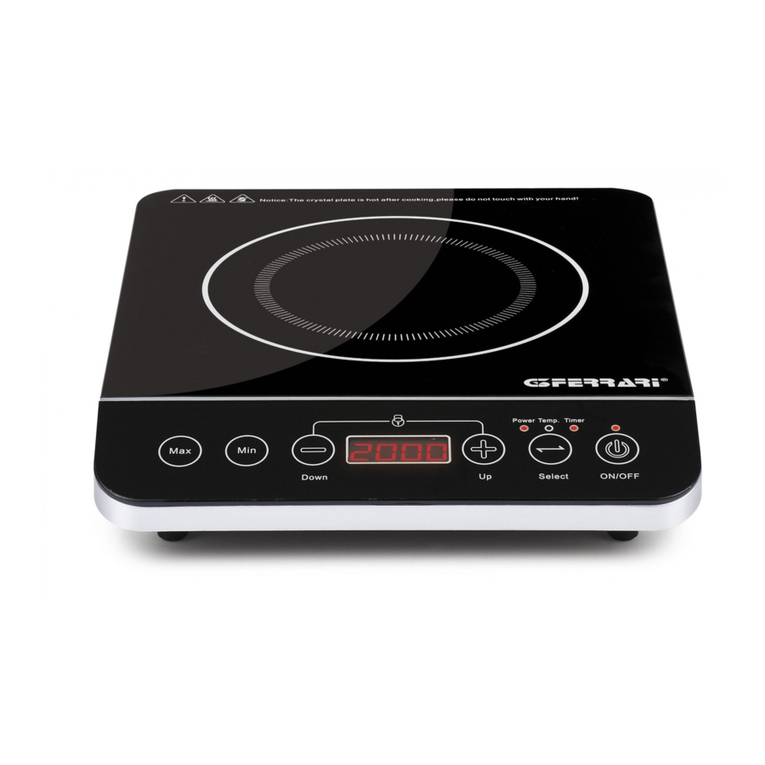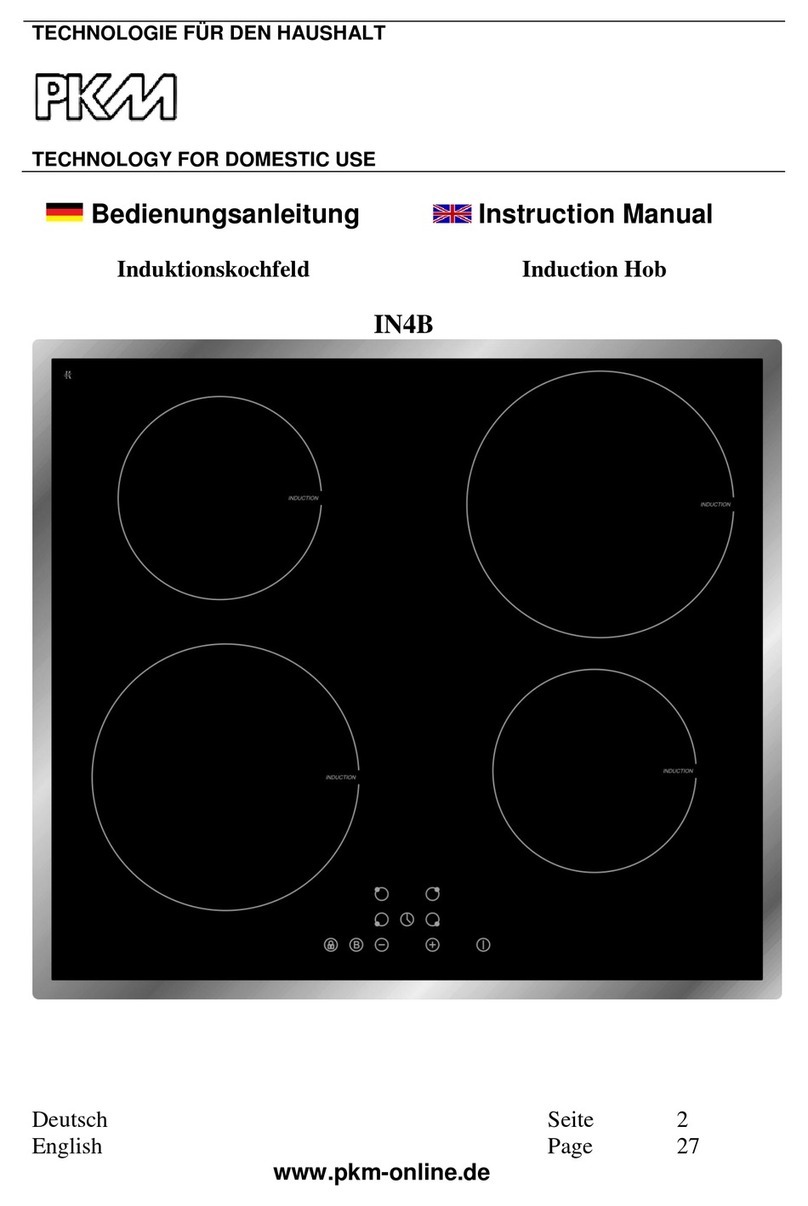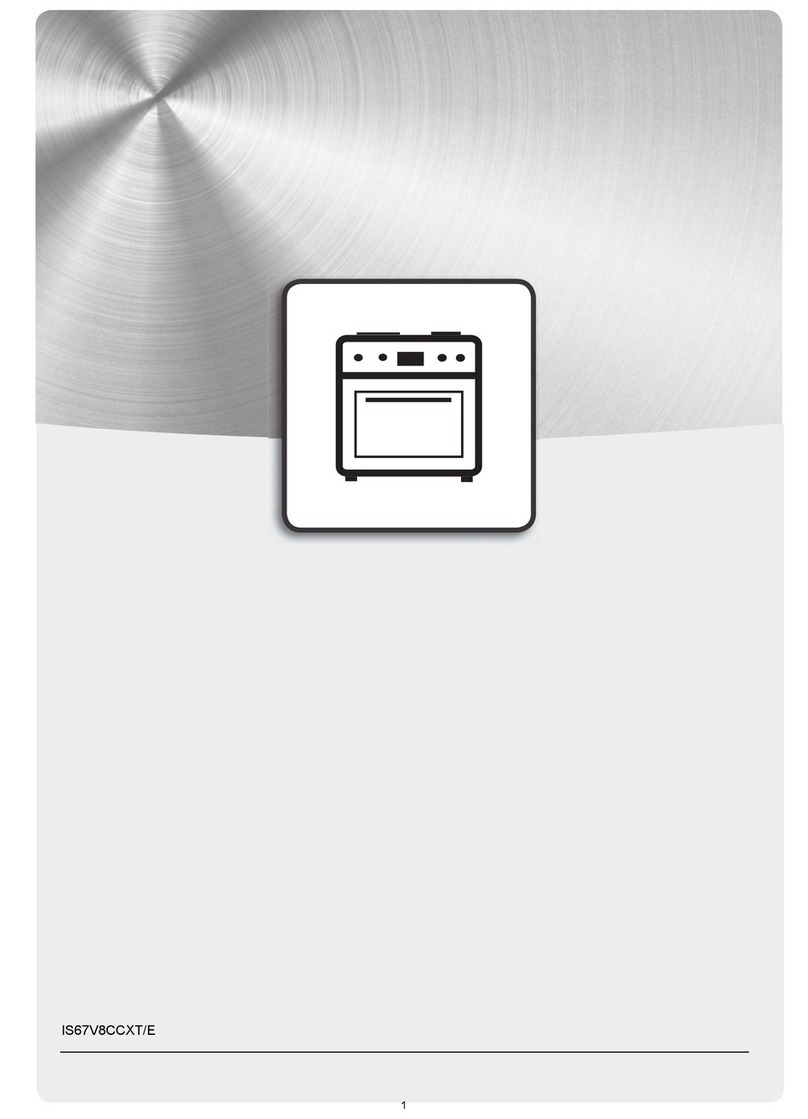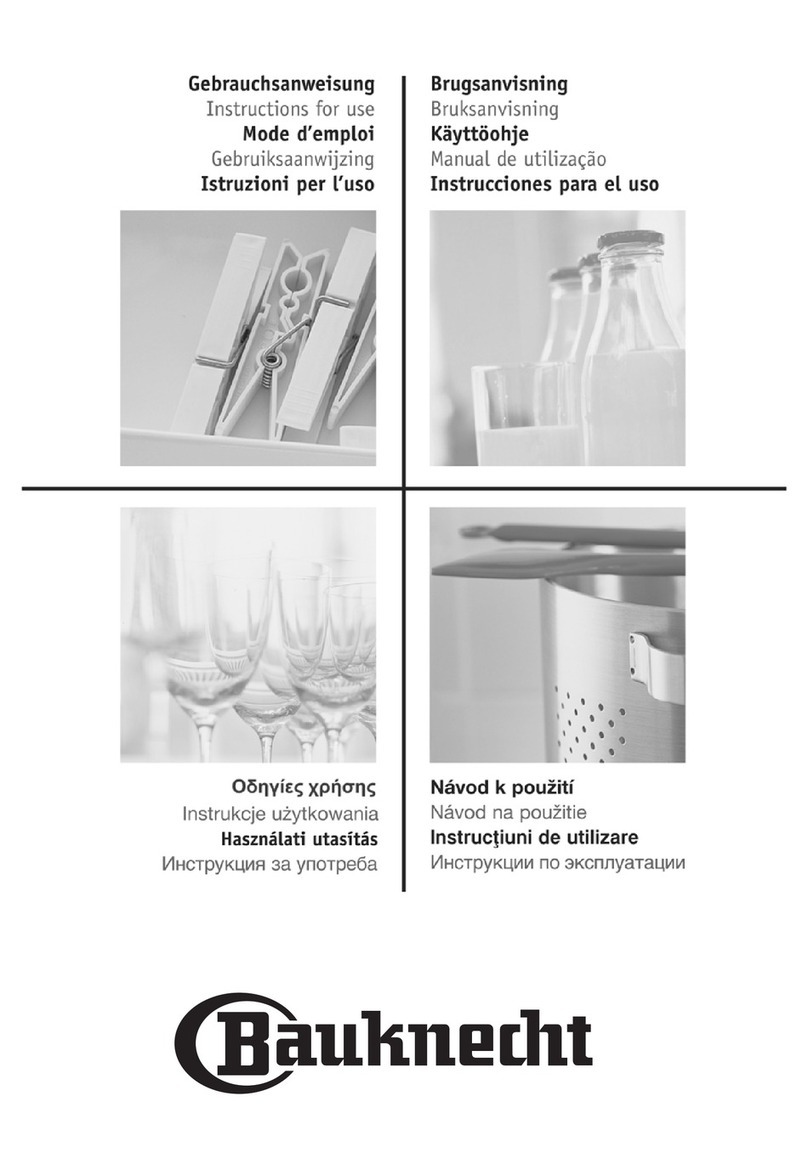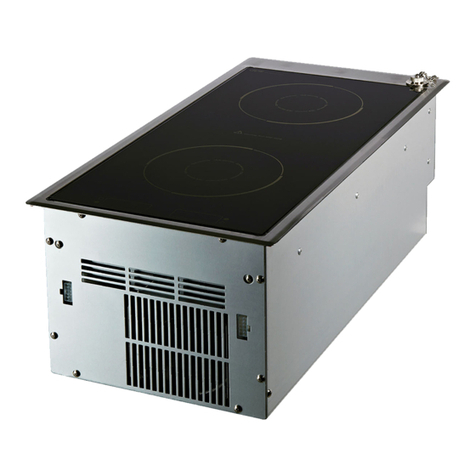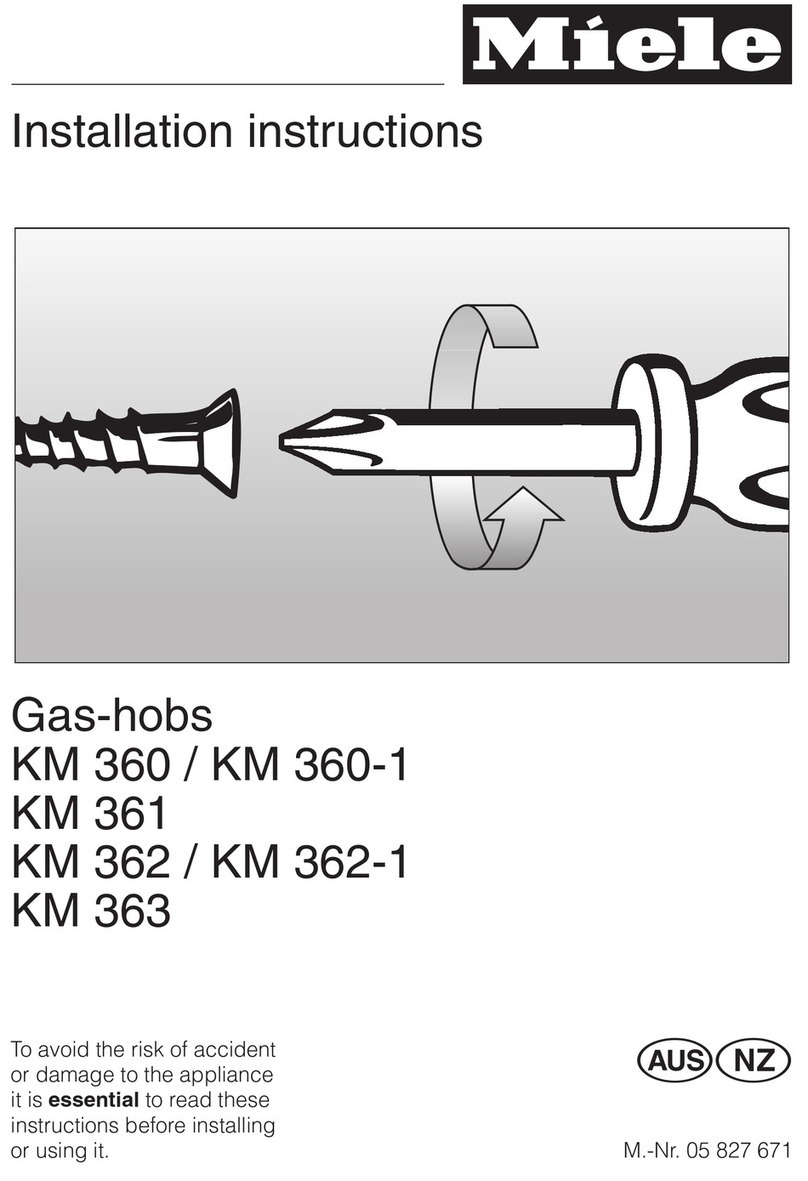
Safety en
3
1.3 Restriction on user group
This appliance may be used by children aged
8 or over and by people who have reduced
physical, sensory or mental abilities or inad-
equate experience and/or knowledge,
provided that they are supervised or have
been instructed on how to use the appliance
safely and have understood the resulting
dangers.
Do not let children play with the appliance.
Children must not perform cleaning or user
maintenance unless they are at least 15 years
old and are being supervised.
Keep children under the age of 8 years away
from the appliance and power cable.
1.4 Safe use
WARNING‒Risk of fire!
Leaving fat or oil cooking on an unattended
hob can be dangerous and may lead to fires.
▶Never leave hot oil or fat unattended.
▶Never attempt to extinguish a fire using wa-
ter; instead, switch off the appliance and
then cover with a lid or a fire blanket.
The cooking surface becomes very hot.
▶Never place flammable objects on the
cooking surface or in its immediate vicinity.
▶Never place objects on the cooking sur-
face.
The appliance will become hot.
▶Do not keep combustible objects or aero-
sol cans in drawers directly underneath the
hob.
Hob covers can cause accidents, for example
due to overheating, catching fire or materials
shattering.
▶Do not use hob covers.
After every use, switch off the hob using the
main switch.
▶Do not wait until the hob turns off automat-
ically as there are no longer any pots and
pans on it.
Food may catch fire.
▶The cooking process must be monitored. A
short process must be monitored continu-
ously.
WARNING‒Risk of burns!
The appliance and its parts that can be
touched become hot during use, particularly
the hob surround, if fitted.
▶Caution should be exercised here in order
to avoid touching heating elements.
▶Young children under 8 years of age must
be kept away from the appliance.
Hob protective grilles may cause accidents.
▶Never use hob protective grilles.
The appliance becomes hot during operation.
▶Allow the appliance to cool down before
cleaning.
Metal objects on the hob quickly become very
hot.
▶Never place metal objects (such as knives,
forks, spoons and lids) on the hob.
WARNING‒Risk of electric shock!
Incorrect repairs are dangerous.
▶Repairs to the appliance should only be
carried out by trained specialist staff.
▶Only use genuine spare parts when repair-
ing the appliance.
▶If the power cord of this appliance is dam-
aged, it must be replaced with a special
connection cable, which is available from
the manufacturer or his Customer Service.
If the appliance or the power cord is dam-
aged, this is dangerous.
▶Never operate a damaged appliance.
▶If the surface is cracked, you must switch
off the appliance in order to prevent a pos-
sible electrical shock. To do this, switch off
the appliance via the fuse in the fuse box
rather than at the main switch.
▶Never pull on the power cord to unplug the
appliance. Always unplug the appliance at
the mains.
▶If the appliance or the power cable is dam-
aged, immediately switch off the fuse in the
fuse box.
▶Call customer services. →Page17
An ingress of moisture can cause an electric
shock.
▶Do not use steam- or high-pressure clean-
ers to clean the appliance.
The insulation on cables of electrical appli-
ances may melt if it touches hot parts of the
appliance.
▶Never bring electrical appliance cables into
contact with hot parts of the appliance.
